
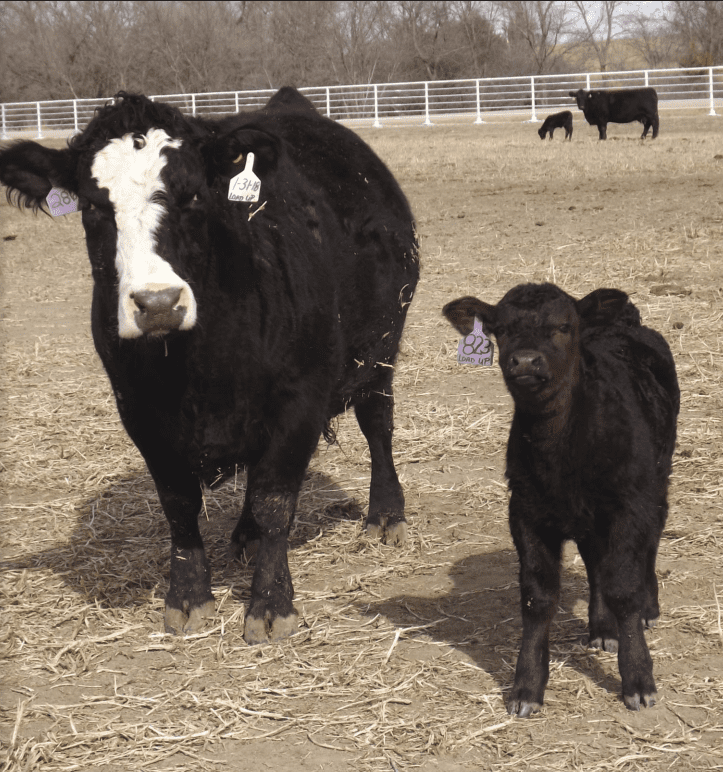
If sitting down with your herd health veterinarian to develop a plan of achieving a healthier herd and a more profitable business gets you just a bit excited, we are of the same mindset.
This is why we as herd health veterinarians do what we do. We want our client’s animals to be healthy and we want your business to be successful.
That is what drives us.
What are the keys to achieving these goals?

I was interviewed years ago by a novice agricultural journalist and she asked me what the critical times in a calf’s life were.
I responded, “The first 12 hours.” She asked what else and I explained that if things went poorly in the first 12 hours like inadequate colostrum intake and environmental stress, little else mattered.
For optimal production of colostrum, cows need to have proper nutrition and be in adequate body condition (BCS). This is why we all need a ruminant nutritionist on our “Beef Team.”
Calves need to have excellent vigor at birth.
My “rule of thumb” is 30-30-30. A calf should be born 30 minutes after the initiation of stage 2 labor (water sac observed), should be standing 30 minutes after delivery, and should be nursing 30 minutes after birth.
Adequate cow BCS, optimal heterosis, and calving in weather that promotes calf vigor at birth all tip the scales in favor of excellent vigor at birth and superior colostrum consumption.
Most new disease is introduced into a beef herd on four legs and via a livestock trailer.
Sure, wildlife, insects, and the neighbor’s herd can bring in a new disease but that is the exception rather than the rule.
Before I buy a new animal for my herd, I call the seller and ask for permission to talk to her herd health veterinarian about the health of the herd.
If the answer is “no”, that makes for a very short conversation.
If granted permission, I specifically ask, “Has the herd ever had a case of Johne’s disease or a BVD PI positive animal?”
Other diseases may also be on your list.
New additions should be quarantined for at least 30 days after arrival. All veterinarians have stories of producers that say, “I sure wish I would have done that.”
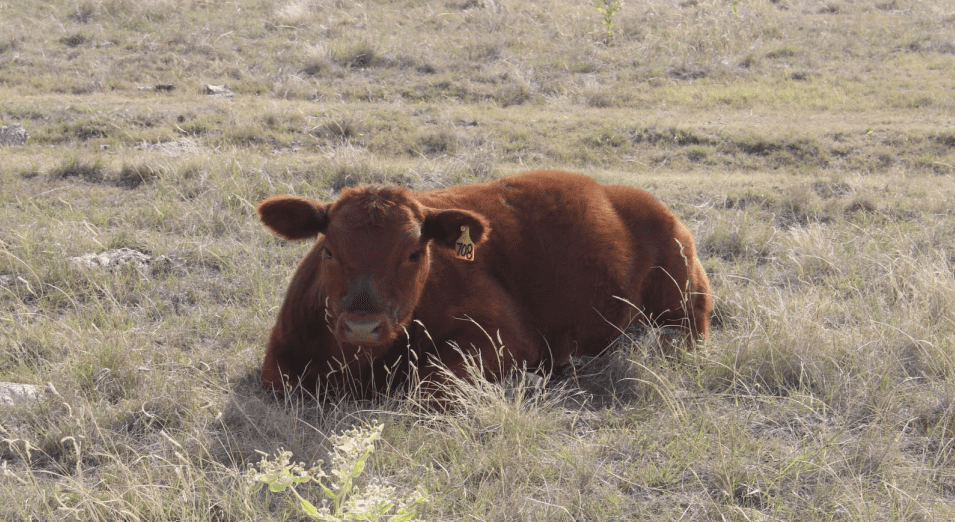
While many would start a herd health plan here, I do not.
Proper immunizations are one tool in our quest to help you have a healthier herd.
We need to use management instead of medicine and money to solve most of our beef cow-calf herd health issues and that is why I began the article as I did.
Producers want and need a vaccination protocol that is customized to their herd.
I strongly recommend a meeting where the herd health veterinarian and beef owners’ team sit down and review the vaccination protocol once yearly.
We need to keep abreast of new research that may improve the producer’s plan.
Even with a customized plan for each herd, there are what I consider to be “core” vaccinations that would fit the huge majority of cow-calf businesses.
Young calves (2-4 months of age) can and should be vaccinated against IBR and BVD.
Modified live vaccines produce primarily cell-mediated immunity and this augments the passive immunity (primarily humoral) the calf received through his dam’s colostrum.
A second dose of MLV vaccine four weeks pre-weaning or at weaning is the standard protocol on many cow-calf operations.
Most calves will also receive a Clostridial bacterin and the strains needed should be customized to the herd.
I also go into my yearly meeting with my clients with a list that includes everything possible – Mannheimia haemolytica, pinkeye, foot rot, etc. – and add or delete based on the need.
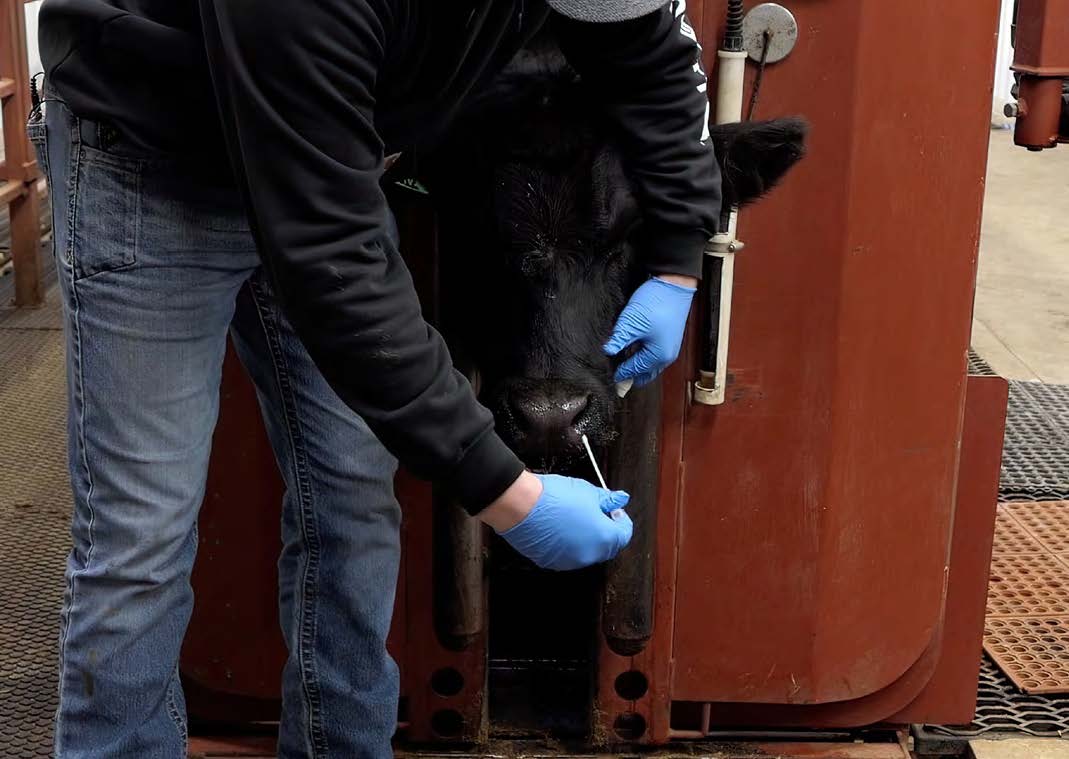
A two-year research project that looked at the effect of MLV or inactivated vaccine on cows pre-breeding made many of us question our long held belief that MLV 30 days pre-breeding was the gold standard.
Over 1,300 cows in 7 herds showed a 6.5% advantage on first-service conception rate and a 2.8% improvement in overall pregnancy rate when an inactivated vaccine was used instead of MLV.
Elanco has spent the past six years researching why this occurred and we believe we have found at least part of the answer.
The MLV vaccine caused an inflammation of the ovary which resulted in a significant reduction in the number of large luteal cells in 24% of the cows.
These cells produce roughly 80% of the progesterone needed to maintain a pregnancy.
A reduction in large luteal cells means lower progesterone which means a decreased conception rate.
All of the cows in the study had been on a yearly MLV program prior to the research trial.

When I was in private practice in Iowa, I had a new client call to let me know he was starting a beef herd. He wanted to make an appointment to “get all of the vaccines needed.”
When he came in, I said, “Tell me about your new herd.” His response was, “I want to vaccinate for everything.”
I opened our vaccine cooler and said, “Start loading it out.” He looked perplexed and I explained that if he vaccinated for “everything”, I would likely make more money on his cows than he would.
I think that I can speak for most beef veterinarians and we love reviewing a client’s vaccination protocol – many times developed by numerous “advisors” – and cutting things out!
A seasoned veterinarian told me early in my career, “Never put a hole in a cow unless it is necessary,” and I have never forgotten that.
I use the lifetime immunity approach to vaccination – using the right product at the right time with the right protection.
If any item needs a customized approach, it is pest and parasite management.
There is zero chance that a “cookie cutter” program will be effective for you.
Product used and timing are critical to success.
I despise flies! Although we cannot eliminate flies, we can lessen their impact.
Pour-ons, insecticide ear tags, insect growth regulator (IGR) in mineral, sprays, and rubs should be used as needed in a coordinated effort.
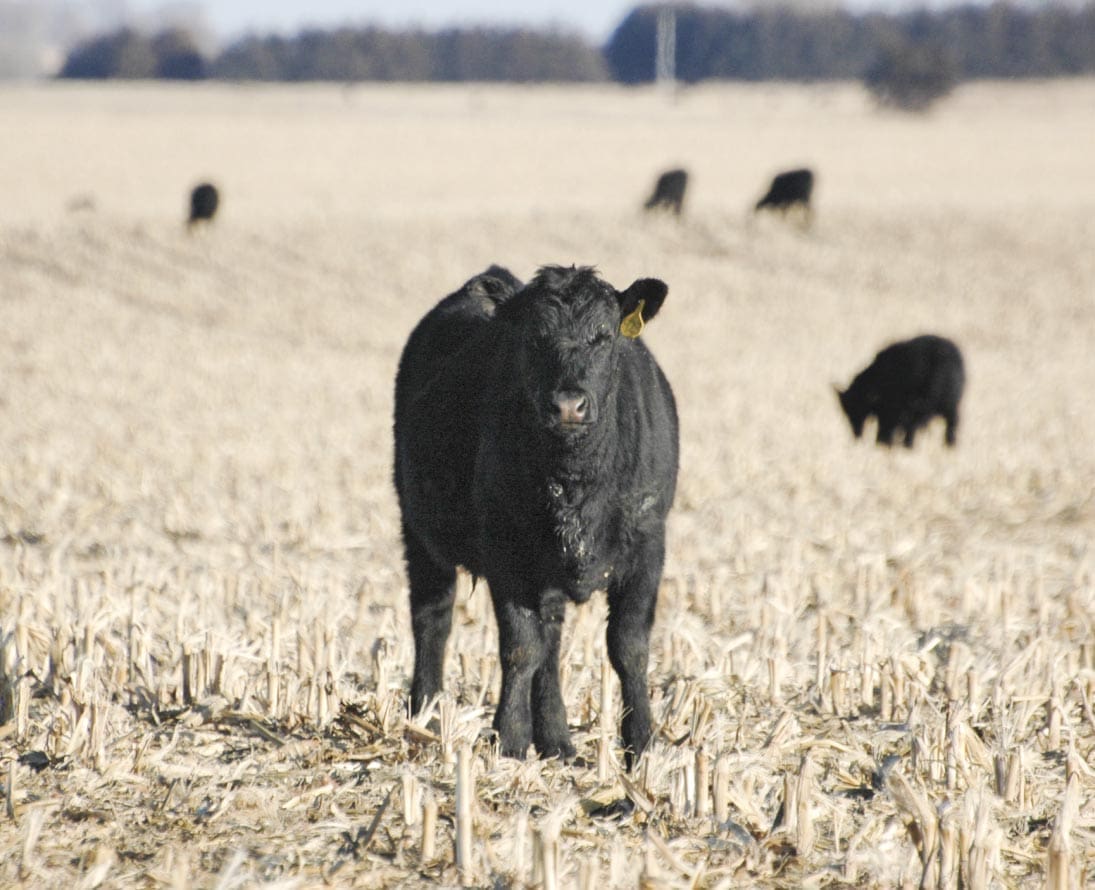
For the best chance of success, treat animals with a pour-on soon after the cows have a winter haircoat.
For where I live in Indiana, I recommend “between Halloween and Thanksgiving” as an easy-to-remember time frame.
Timing is very dependent on ambient temperature. Be sure to get the product down on the skin. Spraying a cow as she runs past you will yield poor results.
In my 39 years as a beef veterinarian, I think I have seen recommendations change about 6 times on who to deworm, what to use, and when to treat.
Please do not call me in 10 years and say, “Hey! What you said in 2022 is wrong!”
One of our beef doctors at Elanco says, “4 score and under 4 for deworming cows and bulls”.
The translation is all cows BCS 4 or lower and all females 4 years and under get dewormed.
All others serve as refugia, or non-treated animals (along with nursing calves). This is to decrease the chance of resistance.
Cows develop some immunity to internal parasites as they age.
When I was discussing this “new” concept with a producer, I pointed to one of her 5-year-old cows in BCS 6 with a big strapping calf by her side.
I said, “Whatever worms that cow has in her body, you want them on your pasture!” She smiled and agreed.
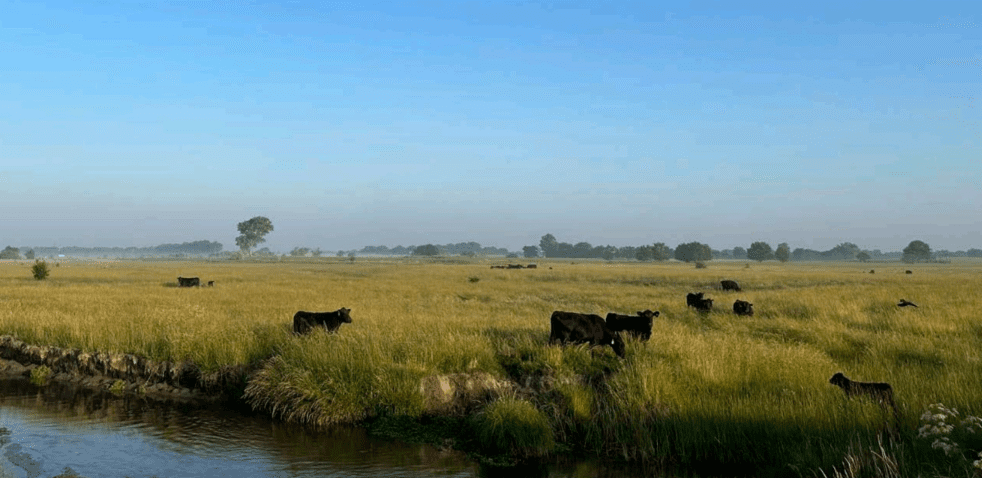
If someone wiser than me, like Dr. Tom Noffsinger, were writing this article, this might have been listed at number 1. I can’t disagree.
One of our jobs as the herd health veterinarian is to be that second set of eyes to examine extremely important functions such as animal handling.
Everything needs to be low stress.
I have asked my clients, “Would you like to make working cattle easier for you and the cattle?” many times.
The answer is always “yes”.
It is very rewarding to get a call after our recommendations have been implemented with the client expressing thanks for improving this critical aspect of their business.
A beef cow-calf herd health plan is a system with many integrating factors.
One key to having a healthier cow-calf herd and a more profitable beef business is for the herd health veterinarian and the owner’s beef team to meet on a yearly basis to update the team’s customized, total beef herd health program.
 W. Mark Hilton was born and raised on a swine and beef farm in Indiana. He earned a BS in Animal Science and DVM from Purdue University. Hilton began his veterinary career with Dr. Bill Speer in an 80% farm animal practice in DeWitt, Iowa. In practice he developed “The Total Beef Herd Health Program”. This was a comprehensive, preventative medicine pro gram where he consulted with beef cow-calf producers concerning nutrition, genetics, herd production and financial records, marketing, health, fertility, and environmental improvement. Dr. Hilton is board certified by the American Board of Veterinary Practitioners in beef cattle practice and is also a Professional Animal Scientist. After 15 years in practice, Mark joined the Purdue University College of Veterinary Medicine as a clinical professor of beef production medicine and a food animal ambulatory clinician. After 18 years at Purdue, Hilton joined the beef technical consulting team at Elanco Animal Health. He is also the President of Midwest Beef Cattle Consultants, LLC., a consulting and beef genetics business. Hilton coauthored the “Vet’s Opinion” column for BEEF magazine for 21 years. Mark has been married to his wife, Denise (they met in 4-H) for 42 years. They have two sons, two daughters-in-law, and seven grandchildren.
W. Mark Hilton was born and raised on a swine and beef farm in Indiana. He earned a BS in Animal Science and DVM from Purdue University. Hilton began his veterinary career with Dr. Bill Speer in an 80% farm animal practice in DeWitt, Iowa. In practice he developed “The Total Beef Herd Health Program”. This was a comprehensive, preventative medicine pro gram where he consulted with beef cow-calf producers concerning nutrition, genetics, herd production and financial records, marketing, health, fertility, and environmental improvement. Dr. Hilton is board certified by the American Board of Veterinary Practitioners in beef cattle practice and is also a Professional Animal Scientist. After 15 years in practice, Mark joined the Purdue University College of Veterinary Medicine as a clinical professor of beef production medicine and a food animal ambulatory clinician. After 18 years at Purdue, Hilton joined the beef technical consulting team at Elanco Animal Health. He is also the President of Midwest Beef Cattle Consultants, LLC., a consulting and beef genetics business. Hilton coauthored the “Vet’s Opinion” column for BEEF magazine for 21 years. Mark has been married to his wife, Denise (they met in 4-H) for 42 years. They have two sons, two daughters-in-law, and seven grandchildren.
Get all Doc Talk episodes straight to your email inbox!